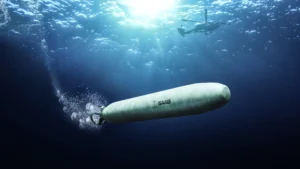
A Navy solicitation showed the service is testing systems that can be used for an Unmanned Undersea Vehicle (UUV) mine sweeping swarm capability. According to the solicitation, posted Feb. 10, Naval Undersea Warfare Center (NUWC) Division Newport (NUWC DIVNPT) is conducting additional research in swarming, particularly evaluating methods of localization, navigation and communications for coordinated multi-UUV swarming operations. “Cooperative and coordinated multi-unmanned underwater vehicle (UUV) operations have enormous potential to introduce novel capabilities for the Navy, including enhanced battlespace awareness…

 By
By 











